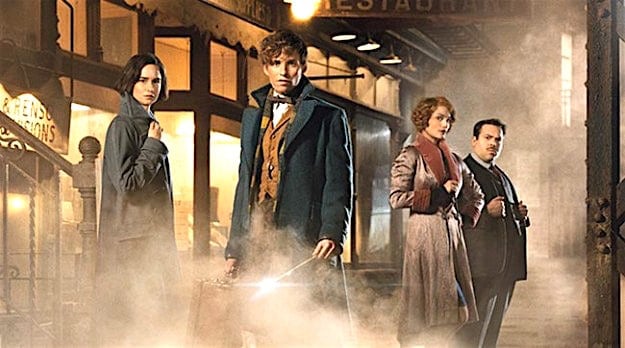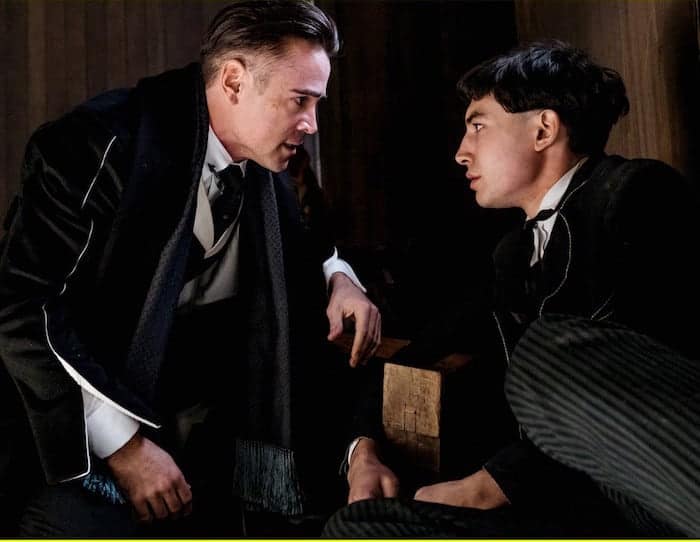How wonderful to see Fantastic Beasts, and where to find them—this latest tale of magic, darkness, and colorful creatures— without ever having read or seen any of the Harry Potter films. I was in a unique position bringing no expectations or prior acquaintance with this highly lucrative genre to the new film starring Eddie Redmayne and the latest wave of breathtaking CGI.
J.K. Rowling has apparently moved beyond the cloistered realm of the HP series and sets her dark tale of magic and alternative love in the 1920s New York, where we first meet nerdy wizard Newt Scamander (Redmayne) a botanical curator of rare and magical animals who arrives from England determined to capture examples of species existing only in the new world.
 Lucky for him, and us, that the awkward collector meets up with sister magicians Queenie (Alison Sudol) and Tina (Katherine Waterston) who in their astonishing ways help him in his mission. Help also arrives, against all odds, in the form of a hapless and rumpled pastry entrepreneur Kowalski (Dan Fogler) who runs into Redmayne in a bank (delicious fun!) where he (the baker) is unsuccessfully seeking a loan.
Lucky for him, and us, that the awkward collector meets up with sister magicians Queenie (Alison Sudol) and Tina (Katherine Waterston) who in their astonishing ways help him in his mission. Help also arrives, against all odds, in the form of a hapless and rumpled pastry entrepreneur Kowalski (Dan Fogler) who runs into Redmayne in a bank (delicious fun!) where he (the baker) is unsuccessfully seeking a loan.
Fantastic Beasts is set in a powerful urban web being woven by the forces of both good and bad wizards, as well as crusaders against wizardry such as Mary Lou Barebone (Samantha Morton), a sadistic evangelist who is torturing her disturbed son Credence Barebone, played with charismatic discomfort by Ezra Miller. Working to foil every least effort of our quartet of protagonists—only one of whom is a no-maj (non-magician)— is the powerful and malevolent Percival Graves played by Colin Farrell whose own magical powers unleash astonishing seismic (and time distorting) explosions and implosions afflicting the cityscape. The plot may drift in and out of credibility—this is a film about fantastic beasts and magical powers after all—but the filmmaking sweeps us away in a way can that can only be called CGI-noir.

Given my innocence of the entire Harry Potter oeuvre, I can only guess that Rowling’s previous wizardry stories deal with the same rich and predominant meta-theme as does Fantastic Beasts. It is about difference, being different, being gifted and Other in all the alternative ways of the 20th century (and of course of every other century as well). The film’s sympathies are with characters who cannot be easily identified or categorized, whose special powers mark them as social outcasts. The metaphor is not heavy-handed, although it is obvious, and the theme of social injustice threads easily through the visual dazzle of fabulous beasts and the wizards who can—occasionally—control them.
Terrifically entertaining, the film’s dark subtext leaves an imprint. The imprint clearly points to many a sequel in which we learn whether Newt and one of the lovely wizards will become lovers, or whether strangely good/bad Percival Graves will emerge in his full identity. Meanwhile, it’s a gorgeous eyeful with just enough dramatic traction to reward adult viewers as well as younger ones.


